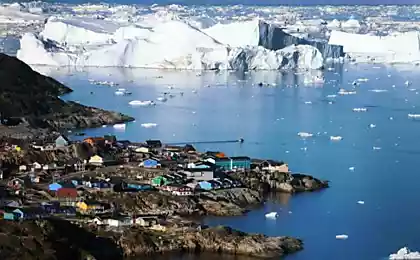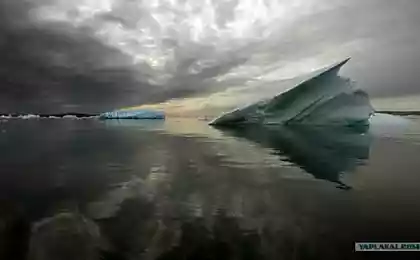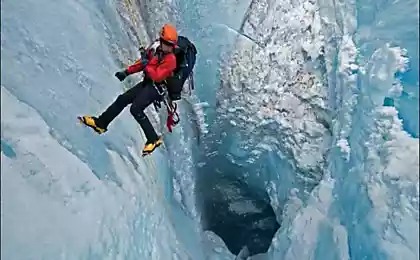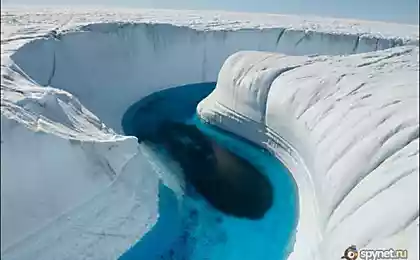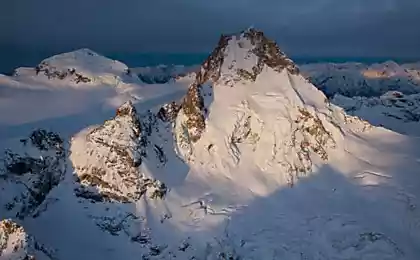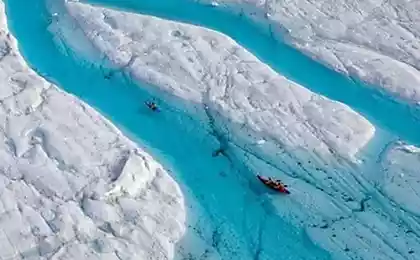816
The glaciers of Greenland (12 photos)
Stunning works of photographer Nick Cobbing, showing the beauty of this island.
Source: photo-finish.ru
1. Aerial view of the front of the Petermann glacier, next to which is an icebreaker Arctic Sunrise. Different color of the water near the glacier due to the fact that the glacier melts, and next to it is a small edge of fresh water.
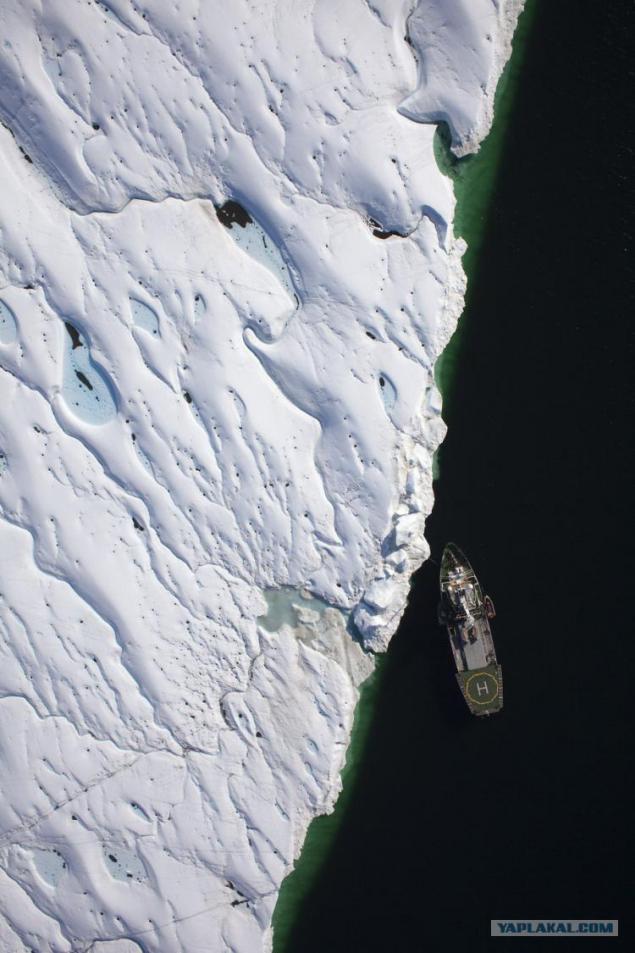
2.Aysbergi moonlit opposite the rocky coast of western Greenland.
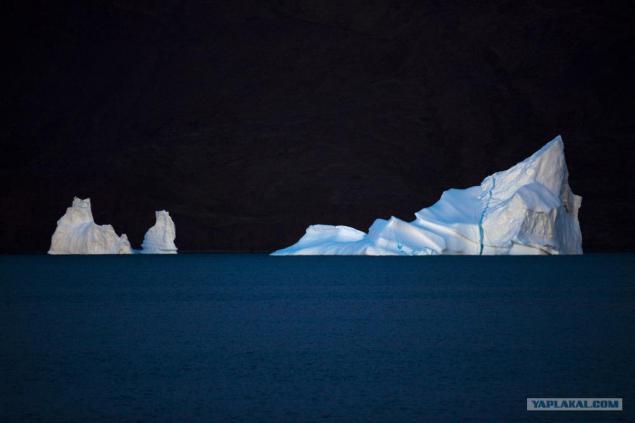
3.Talaya water worked its way through the north Petermann Glacier in Greenland. The channels like this are part of the water system of the glacier, and often in their wake icebergs calve from the glacier.
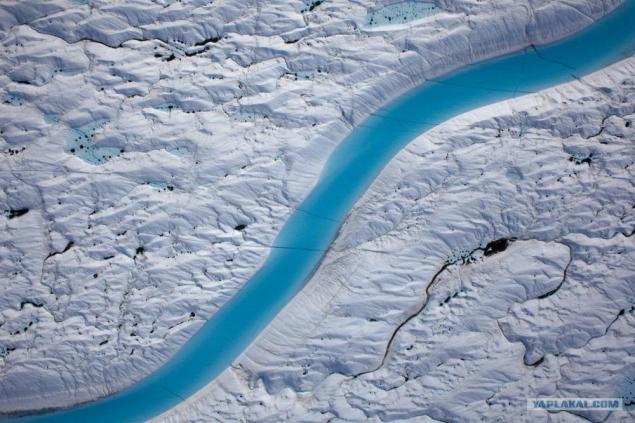
4.A lake of meltwater in the glacier Peterman. It is assumed that brown stuff on the bottom of the lake is "kriokonitom", which is of particular interest to scientists. It reduces the "albedo" of ice - its ability to reflect heat from the sun, because the color of the dark portion of the spectrum. Cosmic dust, which resembles a mixture of mud and silt absorbs more solar heat than the surrounding ice and the ice melts beneath intense. This hole in the glacier becomes deeper.
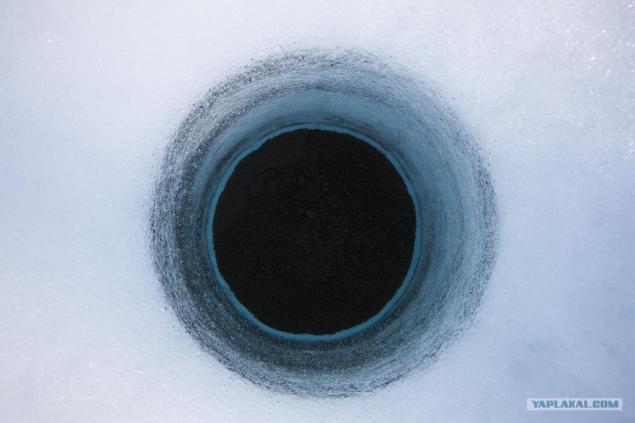
5.Nachalo one of the faults in the front of the Petermann Glacier. Such faults allow part of the glacier break away. The loss of ice mass glacier contributes to sea level rise.
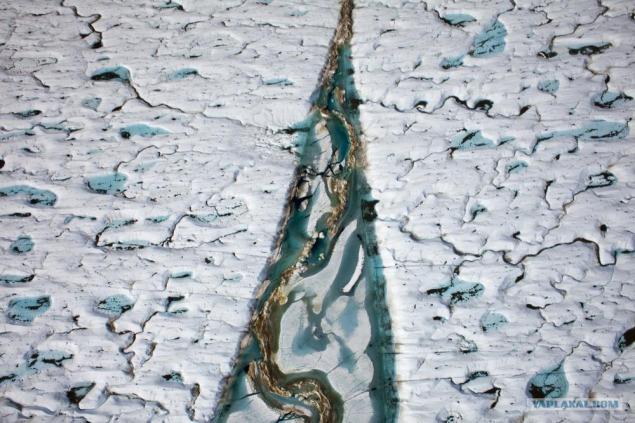
6.Treschiny glacier Kangerdlugssuaq, which is known, is one of the fastest growing glaciers in Greenland. Many of Greenland's glaciers, "accelerated", in the sense that dump more ice into the sea.
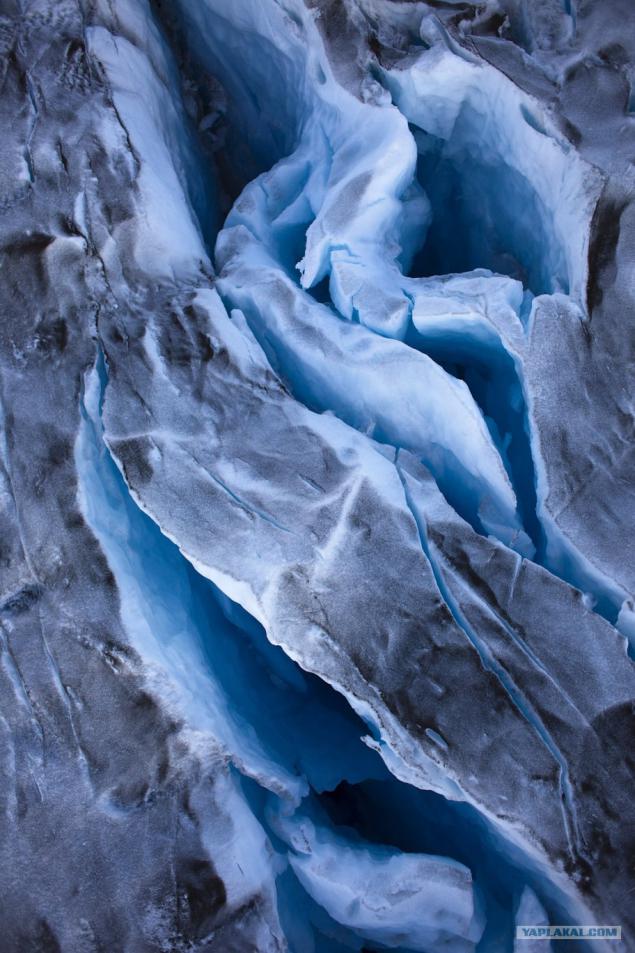
7.Ledokol Arctic Sunrise is almost lost among small fragments of ice, if you look at it from a height of 800 meters. The photographer working with a scientist who studies glaciers broken away from the ice during the Arctic summer. Annual data on sea ice, which were announced shortly after this picture was taken, contain alarming forecasts of sea ice in the summer.
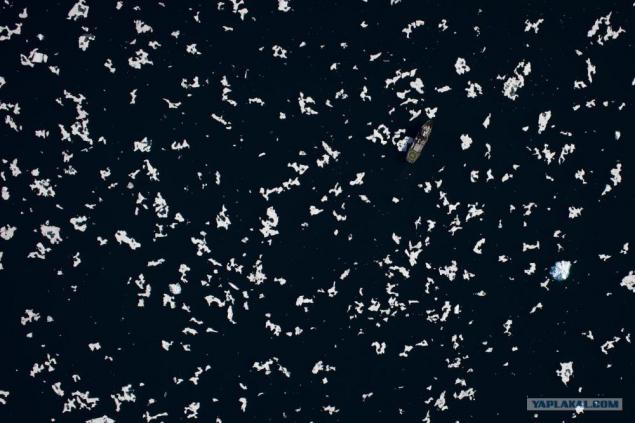
8.Kanaly Petermann glacier on the surface of a warm summer filled with meltwater. Cracks and channels on the north-western side of Greenland caused by the movement of glaciers towards the sea.
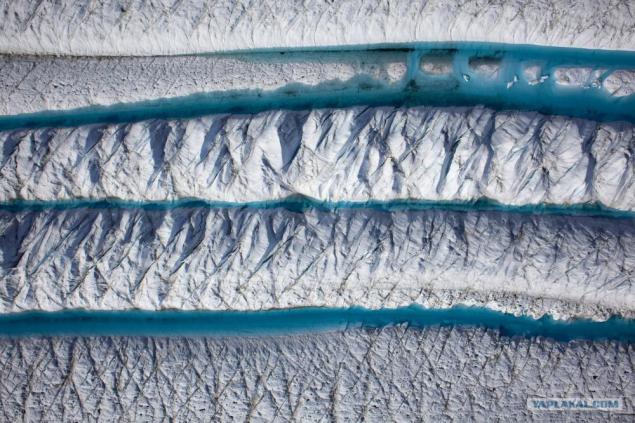
9.Podrobny view of the iceberg that broke away from the Humboldt Glacier in northwestern Greenland. The action of wind, atmospheric heat and melt water have contributed to what turned out to be such a whopper at sea.
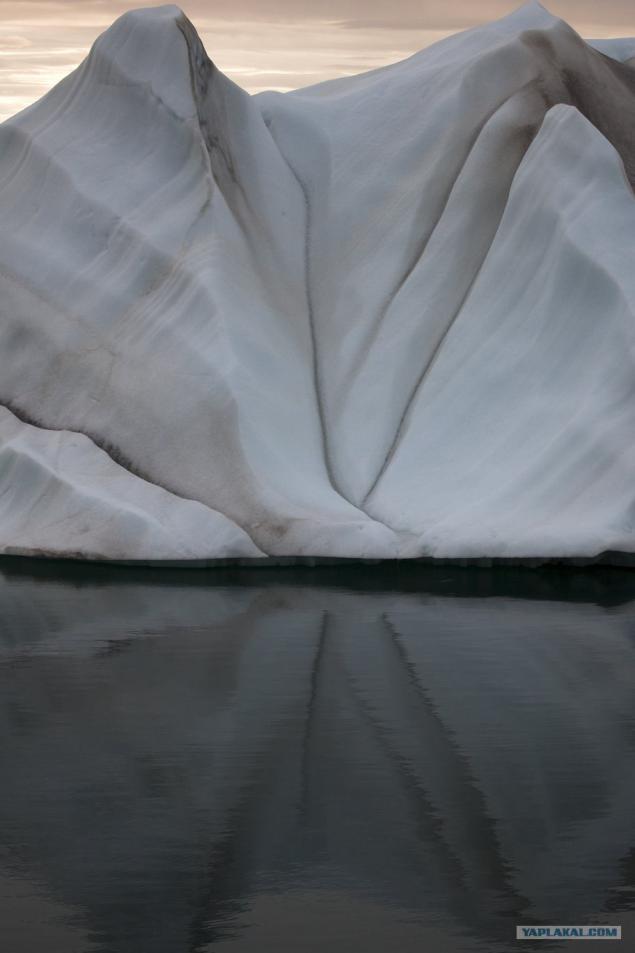
10.Na north of Greenland on a glacier Humboldt rattled a huge chunk of ice broke off and broke into smaller pieces. It is the largest glacier in the northern hemisphere. It has 110 kilometers in diameter. Humboldt and Petermann glaciers (both studied Greenpeace expedition) dumped in the sea ice cover large parts of the north-eastern part of Greenland. Meanwhile, they both constitute only 10 percent of the total of the ice that Greenland is discharged into the sea.

11.Na northeast Petermann Glacier in Greenland covers snow and meltwater. In this part of the glacier ice melting occurs for two reasons: because of the heat of the air heated by the sun and due to internal melting caused by warmer currents inside the glacier.

12.Neobychnaya structure of the iceberg is made of water streams, and after he was in the water, they also added the action of the wind.
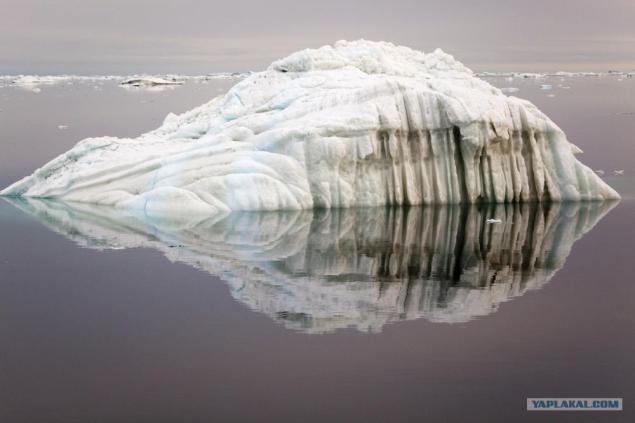
Source:
Source: photo-finish.ru
1. Aerial view of the front of the Petermann glacier, next to which is an icebreaker Arctic Sunrise. Different color of the water near the glacier due to the fact that the glacier melts, and next to it is a small edge of fresh water.

2.Aysbergi moonlit opposite the rocky coast of western Greenland.

3.Talaya water worked its way through the north Petermann Glacier in Greenland. The channels like this are part of the water system of the glacier, and often in their wake icebergs calve from the glacier.

4.A lake of meltwater in the glacier Peterman. It is assumed that brown stuff on the bottom of the lake is "kriokonitom", which is of particular interest to scientists. It reduces the "albedo" of ice - its ability to reflect heat from the sun, because the color of the dark portion of the spectrum. Cosmic dust, which resembles a mixture of mud and silt absorbs more solar heat than the surrounding ice and the ice melts beneath intense. This hole in the glacier becomes deeper.

5.Nachalo one of the faults in the front of the Petermann Glacier. Such faults allow part of the glacier break away. The loss of ice mass glacier contributes to sea level rise.

6.Treschiny glacier Kangerdlugssuaq, which is known, is one of the fastest growing glaciers in Greenland. Many of Greenland's glaciers, "accelerated", in the sense that dump more ice into the sea.

7.Ledokol Arctic Sunrise is almost lost among small fragments of ice, if you look at it from a height of 800 meters. The photographer working with a scientist who studies glaciers broken away from the ice during the Arctic summer. Annual data on sea ice, which were announced shortly after this picture was taken, contain alarming forecasts of sea ice in the summer.

8.Kanaly Petermann glacier on the surface of a warm summer filled with meltwater. Cracks and channels on the north-western side of Greenland caused by the movement of glaciers towards the sea.

9.Podrobny view of the iceberg that broke away from the Humboldt Glacier in northwestern Greenland. The action of wind, atmospheric heat and melt water have contributed to what turned out to be such a whopper at sea.

10.Na north of Greenland on a glacier Humboldt rattled a huge chunk of ice broke off and broke into smaller pieces. It is the largest glacier in the northern hemisphere. It has 110 kilometers in diameter. Humboldt and Petermann glaciers (both studied Greenpeace expedition) dumped in the sea ice cover large parts of the north-eastern part of Greenland. Meanwhile, they both constitute only 10 percent of the total of the ice that Greenland is discharged into the sea.

11.Na northeast Petermann Glacier in Greenland covers snow and meltwater. In this part of the glacier ice melting occurs for two reasons: because of the heat of the air heated by the sun and due to internal melting caused by warmer currents inside the glacier.

12.Neobychnaya structure of the iceberg is made of water streams, and after he was in the water, they also added the action of the wind.

Source:




